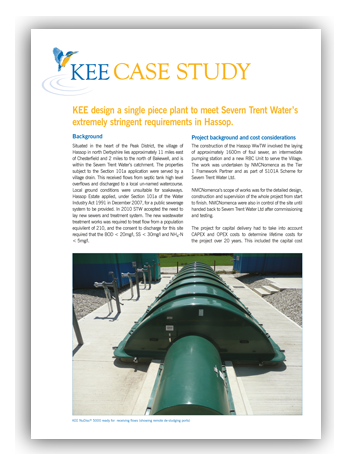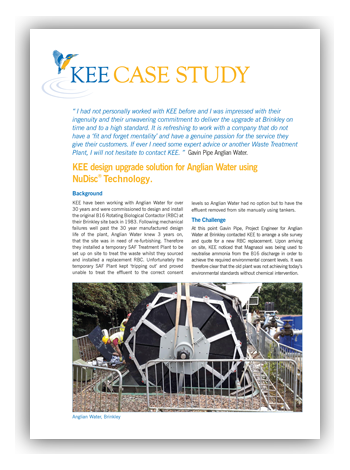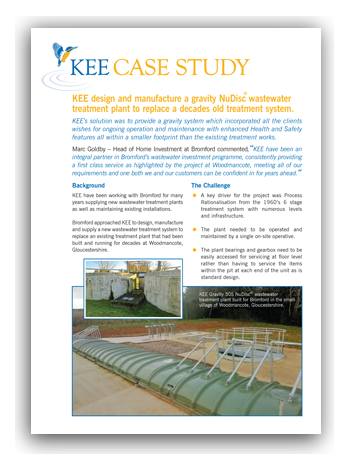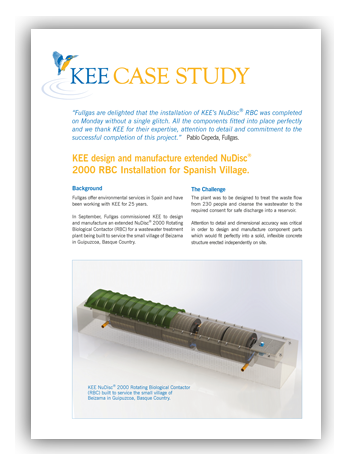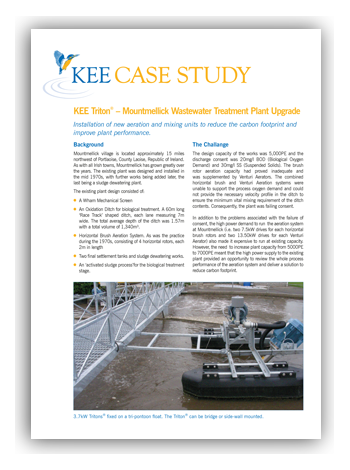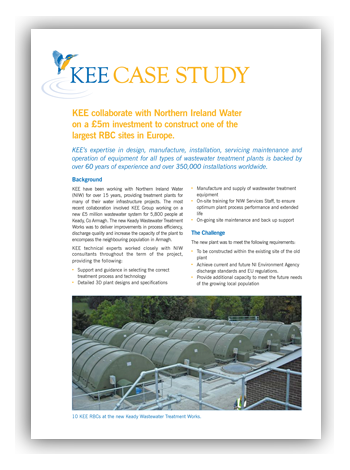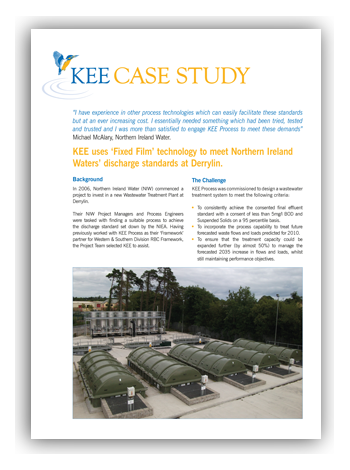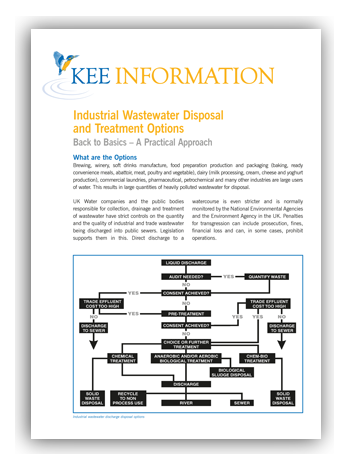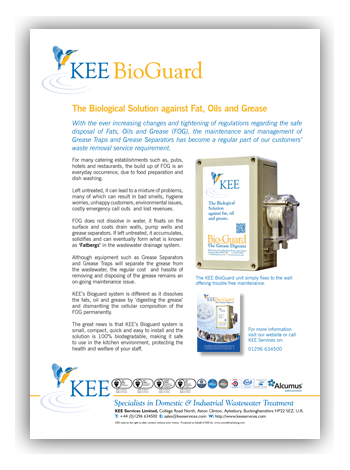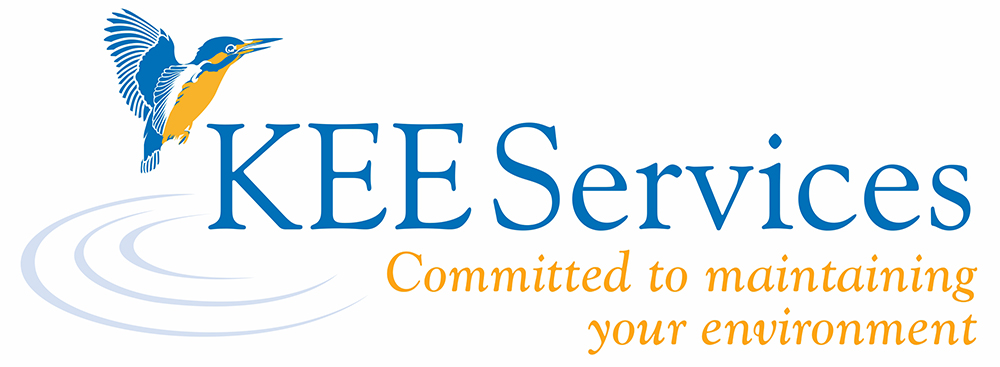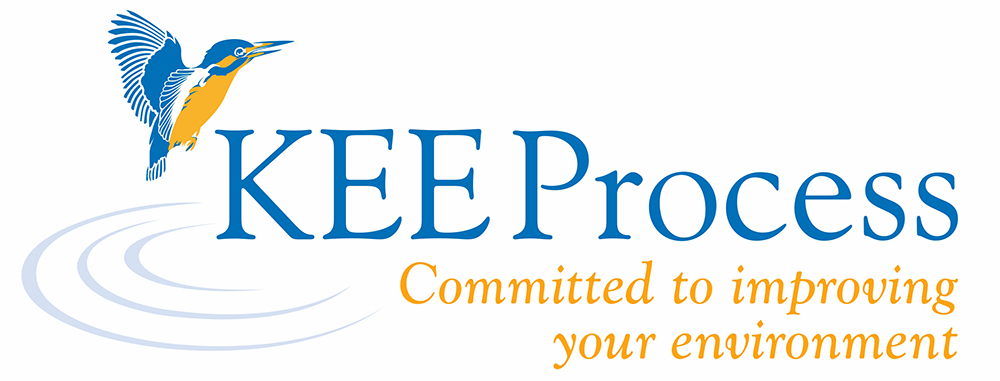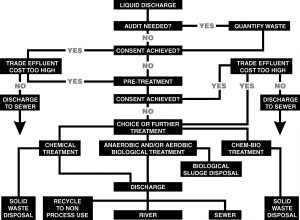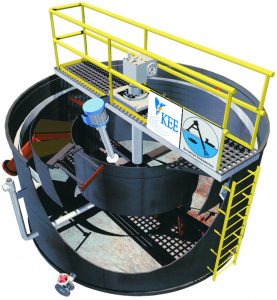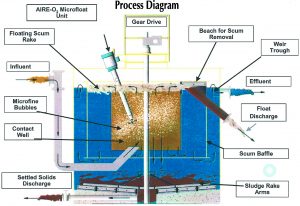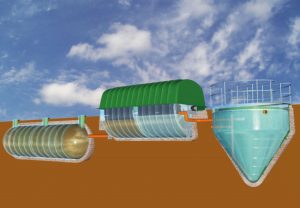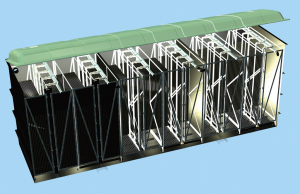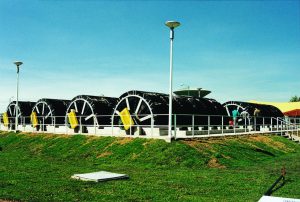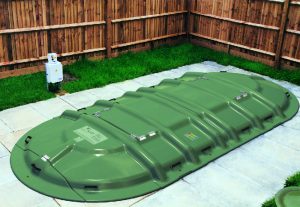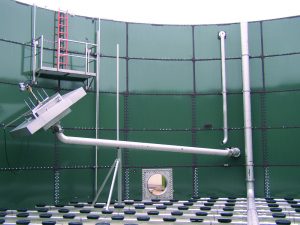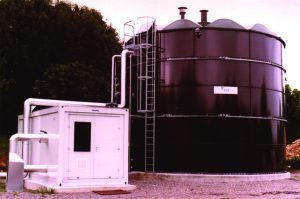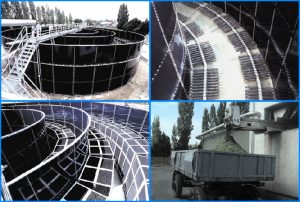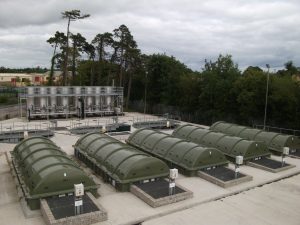Click on images below to view leaflets.
Category Archives: Fixed Film Technology
At KEE we are ‘open for business’
The KEE Group provide solutions to the Wastewater Treatment Industry for all domestic, commercial and industrial applications. CLICK HERE
- KEE are committed to providing total customized solutions for the treatment of wastewater and have the most innovative systems to treat every situation.
- KEE leads the country in the supply, maintenance and operation of wastewater treatment systems and can provide you with the best solution.
- KEE systems are also available for hire.
KEE Services comprises a complete range of options, from simple servicing and repairs through to full service, maintenance and plant operation, including:
- On-Site Plant Operation
- Facilities Management
- Emergency Service
- Planned Maintenance
- Breakdowns
- Equipment Refurbishment
- Spares
- BioGuard™ Grease Digester
- Ancillary Products
KEE wastewater technology provide total solutions for the treatment of wastewater:
- Process Engineering
- Project Management and Turnkey Projects
- Pumping Equipment
- Dispersed Air Floatation (DAF)
- Anaerobic treatment for industrial wastewater
- Sequencing Batch Reactor
- NuDisc™ and Packaged RBC Systems
- Submerged Aerated Filters (SAF)
- Oxidation Ditch
- Installation and Commissioning
- Nutrient Removal
For full information on our KEE services and process technology, visit our WEBSITE.

KEE’s Commitment to Environmentally Sustainable Procurement and Fair Trade
One of KEE’s core company values focuses around Environmental Sustainability. As a business, we recognise our obligations to consider the environmental impact the materials we source and the products we produce have on the environment and, we aim to reduce the impacts & ensure environmental sustainability.
Fairtrade is about better prices, decent working conditions and fair terms of trade. It’s about supporting the development of thriving communities so that they have more control over their futures and protecting the environment in which they live and work.
KEE Process Ltd & KEE Services Ltd aim to ensure that we will play our part in reducing risks:
- Use fewer resources and less energy through continuous improvement and the use of innovative solutions.
- Procure all timber and timber products from legal and sustainable sources, and procure with a preference other construction materials from recognised responsible sourcing schemes.
- Specify and procure materials and products that strike a responsible balance between social, economic and environmental factors and generate benefits to society and the economy.
- Use resource-efficient products and give due consideration to end-of-life uses.
- Influence, specify and source increasing amounts of materials which can be reused, and consider future deconstruction and recovery of resources to embrace the circular economy to leave a sustainable legacy across the built environment.
- Where possible, provide opportunities for small and medium sized enterprises (SMEs) increase the use of social enterprises, support local employment, diversity and training and work collaboratively with the voluntary sector, especially those near to our offices and operations.
- Ensure that fair contract prices and terms are applied and respected, and that ethical, human rights and labour standards are met, in line with the United Nations Global Compact principles.
- Source goods, works and services that embody our environmental policy, health & safety policy and support the delivery of our Sustainable Development Strategy.
We believe our commitment to these values is one of a number of ways in which KEE, everyone within the company, and all our customers can demonstrate social, environmental and economic responsibility. Our business like all others changes and evolves over time, but our core values remain the same.
For more information, please call 01296 634500 or visit our website.



Industrial Wastewater Disposal and Treatment Options – Back to Basics – A Practical Approach from KEE Process Limited
What are the Options
Brewing, winery, soft drinks manufacture, food preparation production and packaging (baking, ready convenience meals, abattoir, meat, poultry and vegetable), dairy (milk processing, cream, cheese and yoghurt production), commercial laundries, pharmaceutical, petrochemical and many other industries are large users of water. This results in large quantities of heavily polluted wastewater for disposal.
UK Water companies and the public bodies responsible for collection, drainage and treatment of wastewater have strict controls on the quantity and the quality of industrial and trade wastewater being discharged into public sewers. Legislation supports them in this. Direct discharge to a watercourse is even stricter and is normally monitored by the National Environmental Agencies and the Environment Agency in the UK. Penalties for transgression can include prosecution, fines, financial loss and can, in some cases, prohibit operations.
Audits
It is always advisable to carry out an evaluation of the processes involved in the core business of an organisation to identify sources of wastewater. An audit would help reduce waste/wastewater and disposal costs, quantify flow rates, solids and organic loads and characterise the wastewater to provide the necessary data for analysing the available disposal options and optimise the design of any on-site treatment plant.
It is useful to be subjective when carrying out an audit to ensure that good housekeeping practices are identified to reduce unnecessary waste which would add to the costs of disposing wastewater generated on site. Process audits should be aimed at identifying the waste, excess use of water and energy. Simple actions, such as installations of energy-saving devices or taps and hose controls and careful disposal of solid waste, can produce both financial and environmental benefits. It would also help to reduce the size of an on-site treatment plant if one was planned and this would result in capital cost savings.
An audit would lead to evaluation of volumetric and organic mass loads for design purposes and would aid in characterising the nature of the waste, to optimise the design for on-site treatment plants.
Public Sewer or Watercourse
Public sewers are convenient for disposal if nearby. Quantity, strength and characteristics of the wastewater need to be considered and consented by Authorities or the Water Company in the UK. If approval is granted and the wastewater meets the criteria set, then sewer disposal would be an obvious choice, but this comes at a cost. High COD (Chemical Oxygen Demand) and suspended solids would lead to high costs in discharging to sewer and reducing these parameters could make significant savings. Partial or full onsite treatment would bring about cost savings to sewer discharge but needs justifying through quantification.
Hygiene versus Convenience
With the food processing, beverage and dairy industry, hygiene is of paramount importance. On-site wastewater treatment may be perceived by management as presenting problems although the risks are small. It is vital that the Operatives normally involved in the process part of the industry, do not need to visit the wastewater treatment plant and the risks to main operation therefore are contained and the operation of the wastewater plant becomes one of non-core features. This can be achieved by having the treatment plant operation undertaken by the maintenance department of the industry or independent operators such as KEE Process Limited who would provide a turnkey solution for designing, supplying, installing and operating a plant for a Client.
Treatment Options: Physical, Biochemical or Combination of Both
Where the decision to treat on-site has been made, the appropriate choice of plant has to be determined. Whether partial treatment or full treatment is installed is usually a matter of economics. A capital outlay is necessary and this must have an acceptable payback period. The treatment options available are Physical, Physical/Chemical, Biological or a combination of all or any of these.
On-site treatment could involve simple physical treatment to remove materials such as gross solids, FOG (Fat, Oil & Grease) and can include pH correction. The equipment may include manual or mechanical screens, grease separators or the newly introduced DISPERSED AIR FLOATATION which is simple, economical and extremely efficient and effective. A component of COD associated with these materials would also be removed by the physical treatment. With DISPERSED AIR FLOATATION up to 30% BOD, 50% COD, 60% TSS and over 90% FOG can be removed physically without the use of chemicals. Better performance can be achieved by using coagulant, flocculants and ploy-electrolytes. In most cases, partial treatment using DISPERSED AIR FLOATATION would achieve the reduction in pollution loads necessary to substantially reduce the cost of discharge of effluent to public sewer. The ownership costs (capital expenditure, servicing, maintenance and operation costs) associated with DISPERSED AIR FLOATATION are usually low. The benefits of cost savings in effluent disposal are high and the capital/operating cost of proving on-site partial treatment can be justified against the ownership costs. Given these benefits it may be sufficient not to invest in further onsite treatment for the effluent to be discharged into public sewer.
However, it may still be necessary or even desirable for the wastewater to be treated further for direct discharge to a watercourse or re-used for non-process operations within the industry. In such a case, full on-site treatment would often justify the capital and operations cost. Cost analysis must also take into account the valuable space required for location of the treatment plant on the core business site.
For disposal to watercourse, consent from the Environmental Regulating Authorities (the Environment Agency in the UK) will be necessary.
KEE Microfloat Unit Interior working of the Microfloat System
The full treatment options could include anaerobic fixed film technology. This is particularly suitable for high strength wastewater requiring initial partial treatment prior to sewer disposal or further aerobic treatment to produce effluent suitable for direct discharge to a watercourse. The aerobic process could include:
- Suspended Growth Activated Sludge Process options through Extended Aeration, Sequencing Batch Reactor (SBR) or Oxidation Ditch.
- Fixed Film Process through Rotating Biological Contactors (RBC), Submerged Aerated Filter (SAF).
Choosing the Treatment Option
The most suitable process selection would depend on many factors such as:
- Initial Mechanical/Electrical Capital Cost.
- Installation Cost.
- Operating Cost including on-site attendance/labour costs, energy costs, consumables and plant operation complexities. Disposal costs of physically separated pollutants e.g. FOG, TSS and sludge in case of full Biological treatment plant.
- Servicing, Spares & Maintenance Cost.
- Space and Land requirements for location of the on-site treatment plant.
All the above factors should be taken into account and a discounted cash flow calculated on a 10, 15 or a 20-year replacement cycle. This should be weighed against the cost of disposal to sewer or partial treatment followed by disposal to sewer. When evaluating the disposal costs to public sewer, it is necessary to liaise with the authorities or provider of the central wastewater treatment plant, to establish initial capital cost contribution expected and the potential annual costs associated with sewer discharge over the next 10,15 or 20 years. Armed with all this financial data, the overall cost of various disposal options should be evaluated and the financial disposal option chosen justified on a payback period or the net discounted cash flow, or the simple approach of evaluating the cost of disposing a unit volume (say 1 m3) of effluent.
With so many factors to consider, such as type of treatment, if any, the process selection for partial or full on-site treatment and cost analysis to justify the most appropriate option for disposal of the effluent, it may be beneficial to use the services of a professional. An experienced independent consultant with a wide knowledge of industrial wastewater treatment processes would be the obvious choice. Some Companies do offer a wide spectrum of process options and have the necessary experience to offer turnkey solutions using the most optimised process. Such companies may have a bias towards their own technology and process if they have a limited range of process options to offer. All this should be balanced against their ability to provide project management, process design, site civil work, mechanical/electrical erection, commissioning and more importantly on-site operation with process warranties.
The KEE Group Companies, KEE Process Limited and KEE Services Limited can offer such an option. Their technologies include physio-chemical processes (Dispersed Air Floatation, simple gravity solids and grease separators), Anaerobic Reactors (for high strength wastewaters), Fixed Film (RBC and SAF) Reactors and Suspended Growth Reactors (Activated Sludge Processes such as Extended Aeration, SBR, Oxidation Ditch, Extended Aeration followed by Ultra fine Filtration), and on-site operation of the treatment plant. KEE also have a team of experienced process engineers and project engineers capable of delivering the necessary turnkey solution to suit most customers. KEE Services offer on-site plant operation with out-of-hours emergency backup through a 24hrs manned Call Centre.
RBC Modular System
Photographs showing SAF, RBC, & SBR plants below:
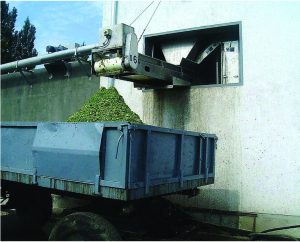
Vegetable processing wastewater screening prior to being treated in a multi-stage Submerged Aerated Filter Plant.
For more information on KEE’s latest NuDisc® RBC, please visit our website or call KEE Process on: 01296 634500
KEE uses ‘Fixed Film’ technology to meet Northern Ireland Waters’ discharge standards at Derrylin.
“I have experience in other process technologies which can easily facilitate these standards but at an ever increasing cost. I essentially needed something which had been tried, tested and trusted and I was more than satisfied to engage KEE Process to meet these demands”
Michael McAlary, Northern Ireland Water.
Background
In 2006, Northern Ireland Water (NIW) commenced a project to invest in a new Wastewater Treatment Plant at Derrylin.
Their NIW Project Managers and Process Engineers were tasked with finding a suitable process to achieve the discharge standard set down by the NIEA. Having previously worked with KEE Process as their ‘Framework’ partner for Western & Southern Division RBC Framework, the Project Team selected KEE to assist.
The Challenge
KEE Process was commissioned to design a wastewater treatment system to meet the following criteria:
- To consistently achieve the consented final effluent standard with a consent of less than 5mg/l BOD and Suspended Solids on a 95 percentile basis.
- To incorporate the process capability to treat future forecasted waste flows and loads predicted for 2010.
- To ensure that the treatment capacity could be expanded further (by almost 50%) to manage the forecasted 2035 increase in flows and loads, whilst still maintaining performance objectives.
The Solution
Fixed Film technology offered the best solution in the form of five Rotating Biological Contactors (RBCs) to meet their design criteria. The RBCs not only delivered the consistent performance they were looking for but also offered the lowest lifetime costs and carbon footprint when compared to all other wastewater treatment options available.
Together with the NIW Project Manager, Technical Advisers and Consultants, KEE Process designed a plant which featured ‘modular phased construction’ to minimise on-site workload and concrete tank construction. The new plant was built and commissioned during 2009 and has since then consistently achieved consent standards and delivered considerable savings in capital costs, operational labour costs and energy.
Final Effluent Consent vs New System Performance
Final effluent Target Actual
BOD <5.00mg/l 2.00mg/l
SS <10.00mg/l 5.00mg/l
NH4-N <3.00mg/l 0.01mg/l
95% ile compliance basis.
Plant Equipment
- Two 6m diameter, prefabricated hopper-bottomed GRP Primary Settlement Tanks were installed, with fully automated sludge and scum draw-off facility.
- Five prefabricated RBCs, housed in GRP tanks with hinged sectional insulated covers.
- Three 6m diameter prefabricated, hopper-bottomed GRP final settlement tanks, with fully automated sludge and scum draw off facility.
- Final discharge was fed into slow gravity sand filters for polishing up the effluent to reduce suspended solids.
Design Features
- A ‘flow splitting’ mechanism was installed to give Process Engineers the ability to channel the wastewater flow through the treatment process in different ways to achieve (a) optimal plant performance and (b) provide the flexibility to construct or expand the plant in phases as and when required.
- Each RBC consisted of four treatment stages, designed to remove all soluble BOD and Ammoniacal Nitrogen to provide the final effluent BOD on a 95 percentile basis.
- An internal ‘recycle system’ was incorporated to optimise the biological stage, the settling character of the fine solids and control of nitrogen from the plant.
Simple Maintenance and Low Lifetime Cost
- A 30 year RBC design warranty and 20 year warranty on all structural components minimised the lifetime costs of the new plant.
- The self-regulating biological stage of the RBCs required very little operational input and maintenance.
- Simple RBC mechanical maintenance schedule consisting of a 6 monthly lubrication change for bearings and biennial lubrication.
- Energy consumption of the RBCs was reduced and installed with a rating of only 1.5kW per RBC, resulting in a demand power consumption of 0.8kW on a continuous basis.
- The RBC Drives were manufactured for a 50 year average lifespan, reducing lifetime costs even further.
Lifetime Cost Savings
NIW reviewed other wastewater treatment works and completed a case study and cost analysis based on a 7.000PE plant. Compared to other process technologies designed for a 30 year life-time, the RBC system provided:
- £317,185 cost saving in power.
- £272,420 cost saving in maintenance, operational labour, sludge disposal, and replacement parts.
- Total OPEX life-time saving of £589,605 over 20 years.
“In today’s economic climate Northern Ireland Water are looking at ways of reducing life-time plant costs whilst meeting ever tighter environment consent standards as agreed and published by the local Environment Agency (NIEA). I needed a simple, easy to maintain process in order to meet these requirements.
The RBC offers a very robust process, achieving good consistent discharge standards, requiring minimum operational and maintenance input and very importantly, low power consumption. This has given me the confidence to accept the RBC process for Derrylin where consistent and tight effluent quality was stipulated by the NIEA”.
Michael McAlary, Wastewater Services Manager, Northern Ireland Water.
